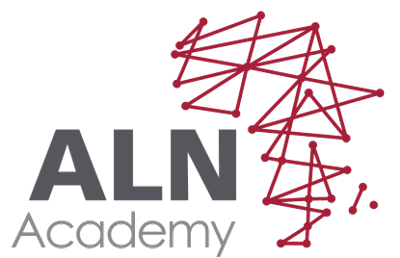Digital ID Systems in Africa: Ensuring Legal Identity for All

Globally, more than 1 billion people lack identity documentation. The World Economic Forum estimates that just under half of these “identityless” individuals live in sub-Saharan Africa. Within a country’s borders, the inability to prove one’s identity means exclusion from basic legal, social and economic rights and opportunities. Outside one’s country of origin, the inability to prove nationality makes individuals at risk of statelessness, violations of their rights, and the inability to return. To address this problem, the UN’s Sustainable Development Goal 16.9 (providing legal identity for everybody) and the African Union’s Agenda 2063 aim to reach universal registration in 2030 and 2063, respectively.

Despite the vital importance of official recognition of nationality and existence, more than 50% of children born on the African continent lack birth registration, and thus national identification. In some cases, such as Somalia, the rate is as high as 97%. While progress has been made to improve birth registration in the last decades projections show that at the current rate of population growth, the number of children not registered at birth will exceed 100 million by 2030 if no immediate measures are taken to ensure every child has a legal identity. To address this identification lacuna and respect the right to nationality enshrined in Article 6 of the African Charter on the Rights and Welfare of the Child, the African Union and UNICEF launched the “No Name Campaign” in June 2020, which emphasized the need for the digitalization and interoperability of registration systems across the continent.
There are various other reasons that individuals may find themselves without official identification. For example, legal identity records may be destroyed by conflict or disaster, left behind while fleeing the country, lost during a migrant’s journey, or confiscated by smugglers or corrupt officials. There is evidence that unregistered youths, who are consequently unable to prove their age, are more vulnerable to marginalization, discrimination, abuse, child marriage, child labour, forced recruitment to armed groups and forces, and trafficking. Unsurprisingly, these threats are exacerbated when youths are on the move.
A lack of official identification documents hinders the cross-border mobility of youth in Africa because it makes formal migration impossible. Identity documents including proof of nationality are required to cross international borders and internal checkpoints. Seeing as over 50% of children in Africa lack identification, that means that over half of Africa’s youth are unable to leave their countries of origin. Paradoxically, it is often the limited opportunities and general exclusion experienced by youth due to their lack of identification in their country of origin that can drive them to migrate for better opportunities. Therefore, undocumented Youth who migrate —by choice or by force— must move through irregular channels in order to cross international borders, exposing them to risks of physical harm, exploitation, and the inability to return to their country.
In the effort to facilitate intra-continental movement of persons, the African Union, Regional Economic Communities, and individual states are working together to implement interoperable digitalized identity (Digital ID) systems, as envisioned by the AU Digital Transformation Strategy for Africa (2020-2030). The Digital ID is the unique identification of individuals or entities through a digital channel.
A lack of official identification documents hinders the cross-border mobility of youth in Africa because it makes formal migration impossible. Identity documents including proof of nationality are required to cross international borders and internal checkpoints. Seeing as over 50% of children in Africa lack identification, that means that over half of Africa’s youth are unable to leave their countries of origin. Paradoxically, it is often the limited opportunities and general exclusion experienced by youth due to their lack of identification in their country of origin that can drive them to migrate for better opportunities. Therefore, undocumented Youth who migrate —by choice or by force— must move through irregular channels in order to cross international borders, exposing them to risks of physical harm, exploitation, and the inability to return to their country.
In the effort to facilitate intra-continental movement of persons, the African Union, Regional Economic Communities, and individual states are working together to implement interoperable digitalized identity (Digital ID) systems, as envisioned by the AU Digital Transformation Strategy for Africa (2020-2030). The Digital ID is the unique identification of individuals or entities through a digital channel.

For governments, digital ID refers to the collection of information used to uniquely identify citizens across virtual government platforms. State-issued digital ID is intended to be more widely accessible and less vulnerable than paper documentation. At the most basic level, digital ID may reflect the digital registration of a unique ID number that denotes nothing more than sequence, but many African countries are increasingly adopting more complex systems that attach physical and biometric data such as fingerprint, iris, facial recognition, etc. to one’s Digital ID. Such domestic efforts are encouraged by the African Union’s Agenda 2063: The Africa We Want, which aims to build an interoperable African network of digital ID programs for cross-border trust frameworks, personal data protection, and privacy.
The various efforts to development Digital ID on the continent has had varying social, economic, and human rights implications. Digital ID aims to provide a foundational ID to the millions of Africans who lack legal identification and on which other identifiers such as national ID, refugee ID, non-resident ID, etc. can be “stacked” and consolidated. Not only are such systems expected to expedite and expand accessibility to public services domestically, but also to facilitate regional integration by streamlining and interoperating cross-border identification procedures for individuals on the move. For example, the free movement of persons under the East African Community Common Market Protocol has been hindered by the varying levels of state-issued national IDs among Member States (neither Uganda nor Tanzania at the time of ratification of the Protocol issued national identity cards, which are required for cross-border travel). However, East African countries are now increasingly considering implementing digital ID systems to overcome barriers to regional mobility.
While digital ID is vital for individuals and governments to trust each other online, the unregulated access to biometric data or the outright exclusion from digital ID systems has raised concerns regarding security and human rights. Over the past decade, activists, academics and civil society organizations have written open letters to both their governments and the World Bank’s ID4D initiative, which is the main international actor encouraging and funding the rapid roll-out of digital ID systems in Africa, raising their concerns about the initiative’s risk of exclusion, exploitation, and surveillance. In response, national courts around the world have ordered the suspension and review of national Digital ID systems.

